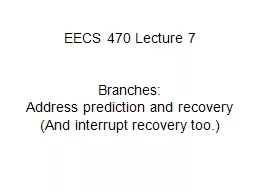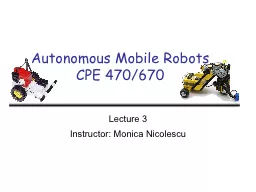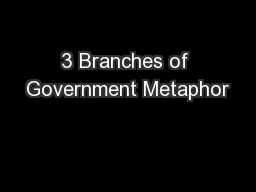PPT-EECS 470 Lecture 7 Branches:
Author : myesha-ticknor | Published Date : 2019-03-22
Address prediction and recovery And interrupt recovery too Warning Crazy times coming Project handout and group formation today Help me to end class 12 minutes early
Presentation Embed Code
Download Presentation
Download Presentation The PPT/PDF document "EECS 470 Lecture 7 Branches:" is the property of its rightful owner. Permission is granted to download and print the materials on this website for personal, non-commercial use only, and to display it on your personal computer provided you do not modify the materials and that you retain all copyright notices contained in the materials. By downloading content from our website, you accept the terms of this agreement.
EECS 470 Lecture 7 Branches:: Transcript
Download Rules Of Document
"EECS 470 Lecture 7 Branches:"The content belongs to its owner. You may download and print it for personal use, without modification, and keep all copyright notices. By downloading, you agree to these terms.
Related Documents














